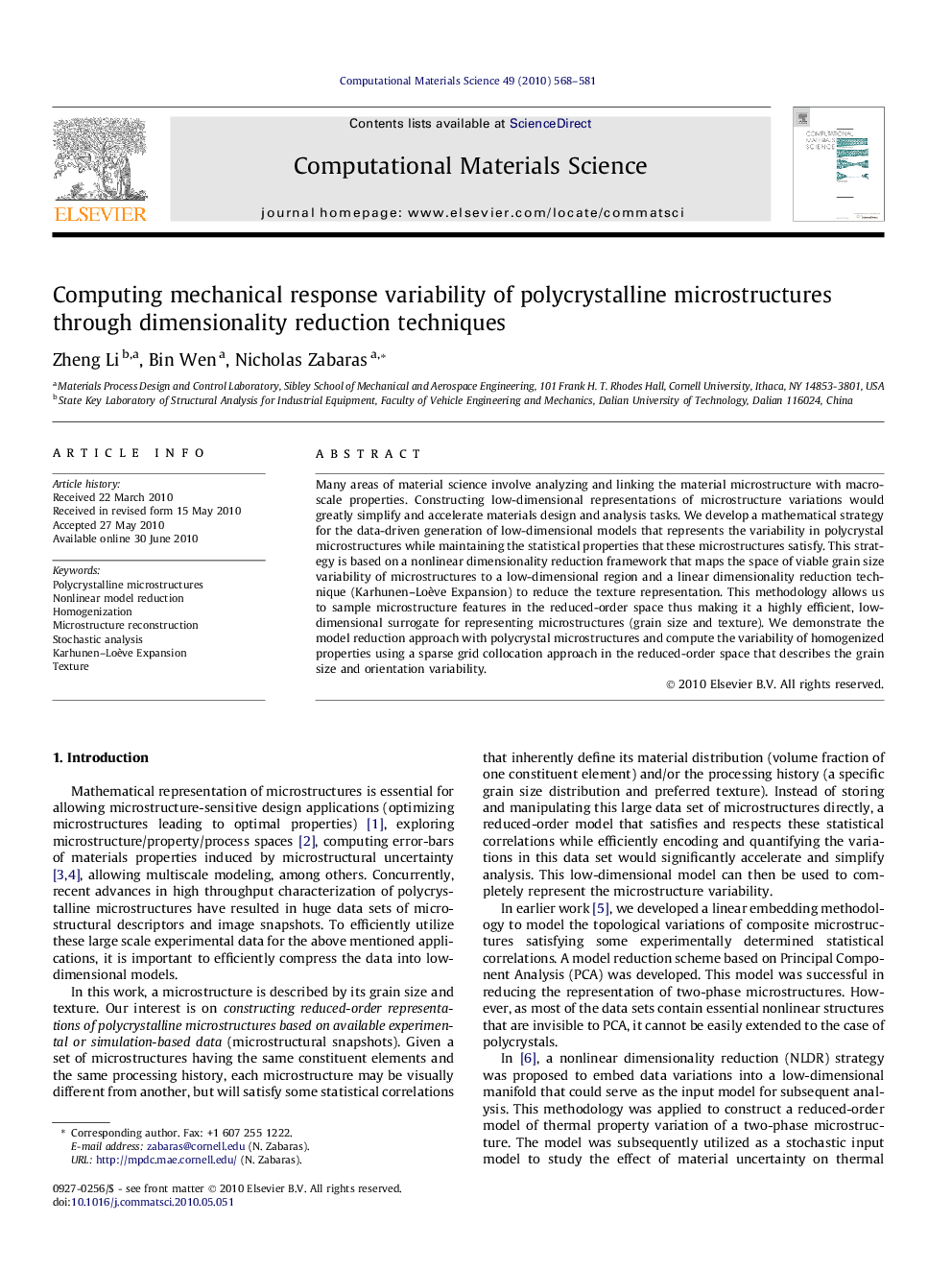| Article ID | Journal | Published Year | Pages | File Type |
|---|---|---|---|---|
| 1562596 | Computational Materials Science | 2010 | 14 Pages |
Many areas of material science involve analyzing and linking the material microstructure with macro-scale properties. Constructing low-dimensional representations of microstructure variations would greatly simplify and accelerate materials design and analysis tasks. We develop a mathematical strategy for the data-driven generation of low-dimensional models that represents the variability in polycrystal microstructures while maintaining the statistical properties that these microstructures satisfy. This strategy is based on a nonlinear dimensionality reduction framework that maps the space of viable grain size variability of microstructures to a low-dimensional region and a linear dimensionality reduction technique (Karhunen–Loève Expansion) to reduce the texture representation. This methodology allows us to sample microstructure features in the reduced-order space thus making it a highly efficient, low-dimensional surrogate for representing microstructures (grain size and texture). We demonstrate the model reduction approach with polycrystal microstructures and compute the variability of homogenized properties using a sparse grid collocation approach in the reduced-order space that describes the grain size and orientation variability.
